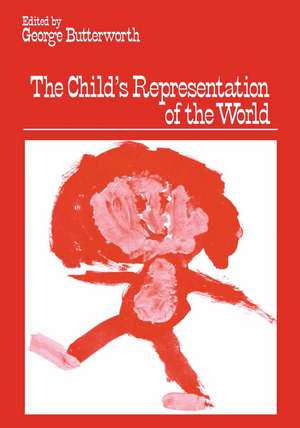The Child’s Representation of the World
Editat de George Butterworthen Limba Engleză Paperback – 13 mar 2012
Preț: 389.31 lei
Nou
Puncte Express: 584
Preț estimativ în valută:
74.50€ • 77.50$ • 61.51£
74.50€ • 77.50$ • 61.51£
Carte tipărită la comandă
Livrare economică 15-29 aprilie
Preluare comenzi: 021 569.72.76
Specificații
ISBN-13: 9781468423518
ISBN-10: 1468423517
Pagini: 252
Ilustrații: XII, 240 p.
Dimensiuni: 178 x 254 x 13 mm
Greutate: 0.45 kg
Ediția:Softcover reprint of the original 1st ed. 1977
Editura: Springer Us
Colecția Springer
Locul publicării:New York, NY, United States
ISBN-10: 1468423517
Pagini: 252
Ilustrații: XII, 240 p.
Dimensiuni: 178 x 254 x 13 mm
Greutate: 0.45 kg
Ediția:Softcover reprint of the original 1st ed. 1977
Editura: Springer Us
Colecția Springer
Locul publicării:New York, NY, United States
Public țintă
ResearchCuprins
I Children’s Drawing.- 1. How Young Children Try to Plan Drawings.- 2. A Single Case Study of an Autistic Child with Exceptional Drawing Ability.- 3. Production Strategies in the Child’s Drawing of the Human Figure: Towards an Argument for a Model of Syncretic Perception.- 4. A Discussion of Some Sex Differences in a Study of Human Figure Drawings by Children Aged Four-and-a-half to Seven-and-a-half Years.- 5. Naming of Parts: How Children Describe and How Children Draw Common Objects.- II The Child’s Perception and Representation of Space.- 6. The Child’s Representation of Space.- 7. Training Perspective Ability in Young Children.- 8. Scanning Strategies of Children and Adults.- 9. Spatial Representation by Blind and Sighted Children.- 10. “I’m coming to get you: Ready! Steady! Go!” The Development of Communication Between a Blind Infant and His Parents.- III Personality and Representational Style.- 11. Rational and Intuitive Frames of Reference.- IV Philosophical and Cross-cultural Aspects of Representation.- 12. Representation: The Philosophical Contribution to Psychology.- 13. How Children Learn to Represent Three-dimensional Space in Drawings.- 14. Pictorial Recognition as an Unlearned Ability.- 15. Pictures, Symbols and Frames of Reference.













